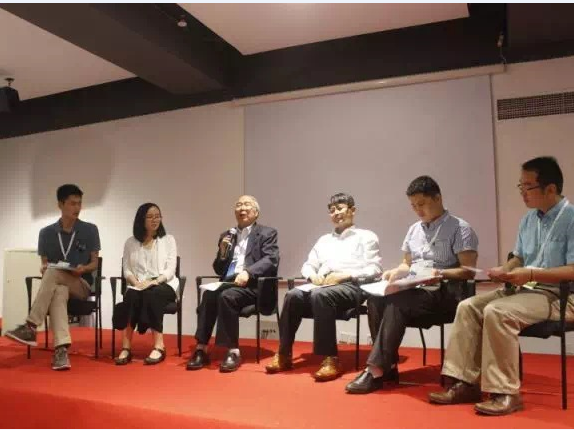


Shanghai, 2016 June: As China's largest economic zone, Yangtze River Delta Zone (covering Shanghai and Jiangsu) has been plagued by haze in recent years. Though the air quality has been improved across the Zone since 2013, the annual average concentration of PM2.5 in the Zone (ex. Zhoushan) was still higher than the national limit in 2015. According to the requirements proposed by the Ministry of Environmental Protection in 2013 that urban air quality of all cities across China should reach level II by 2030 (35 µg/m3 of annual average PM2.5 concentration), Yangtze River Delta region has a long way to go to reach the air quality standards.
On June 16, 2016, Clean Air Alliance of China (CAAC) released a report at National Exhibition and Convention Center (Shanghai), titled How Yangtze River Delta Zone Reach the Air Quality Standards. The Report was written based on joint research by Tsinghua University, Shanghai Environmental Monitoring Center, Shanghai Academy of Environmental Sciences and Innovation Center for Clean-Air Solutions. This is another important report from CAAC following the report released in this February, titled How Will Beijing-Tianjin-Hebei to Achieve Air Quality Standards, and was written for the Yangtze River Delta Zone. Dr. Fu Xiao from School of environment, Tsinghua University profiled the Report. Hao Jiming, chairman of CAAC’s steering committee and academician of Tsinghua University, Chen Jianmin, executive vice dean of Department of Environmental Science and Engineering, Fudan University, Zhao Lijian, director of environmental management project of Energy Foundation, and experts from Shanghai Environmental Monitoring Centerand Shanghai Academy of Environmental Sciences participated in the discussion on depth interpretation of Yangtze River Delta Zone’s clean air road.
The Report first establishes a regional pollutant emissions prediction model and a fast-responding PM2.5 concentration prediction model (ERSM), and then conducts scenario analysis on how Yangtze River Delta Zone to achieve air quality standards. The analysis results show that both the implementation of sustainable energy development strategies and the implementation of emission reduction measures for maximum potential are necessary for ensuring the air quality attainment throughout the Delta Zone.
The recommendations in the Report focus on two aspects: one is to adjust energy and industrial structures and change the life styles to improve energy efficiency, and the other one is to maximize the use of pollutant control technologies. In the Report, the proposed targets include: By 2030, 1} the share of coal in total primary energy consumption should be reduced to 52%; 2) China's energy efficiency should match or basically reach the highest level in the world; and 3) the share of energy cars among new cars sold should arrive at 55%.; and 4) detail suggestions on the technologies with respects with control of pollution from power sector, industry, traffic, solvent use and residential/commercial purpose combustion and biomass burning. The Report also provides some suggestions on policies.
Professor Hao Jiming of Chinese Academy of Engineering, from Tsinghua University summed up: This report comes out timely. Many environmental academies completed research assessments after 2 years release on the ‘Air Quality 10 Actions’. To achieve air quality standards actions must be taken in the industrial structure and energy structure adjustment efforts, both aspects now need to be strengthened. The report mentioned three areas to make efforts, the first is industrial scale, the second is the industrial layout, and the third is the progress of industrial technology; Regarding energy structure, it lays in clean energy, regional energy control and energy efficiency improvement
Wang Lisha, Senior Project Manager from China Clean Air Alliance (CAAC) Secretariat said: CAAC hopes the publishing of this report can support local governments to carry out their air quality compliance plan by adjusting the energy and industrial structure, promoting pollution control measures prior to 2030 or as soon as possible.
To improve the air quality in the Yangtze River Delta Zone, it is necessary to not only enhance and upgrade the guiding policies but also update clean-air technologies to support the implementation of the policies. At this conference, CAAC also explained the solicitation of clean-air technologies for "Bluetech Award" activities. The purpose of the Bluetech Award is to solicit best feasible clean air technologies globally to support China's air pollution prevention and control, and to build a “express channel” to the market for the owners of outstanding technologies. CAAC hopes to, via establishing and promoting Bluetech Award, help the Yangtze River Delta Zone, Beijing-Tianjin-Hebei Region and other key regions improve their air quality and achieve the standards as soon as possible.
The executive summary of the report can be downlodaed here
